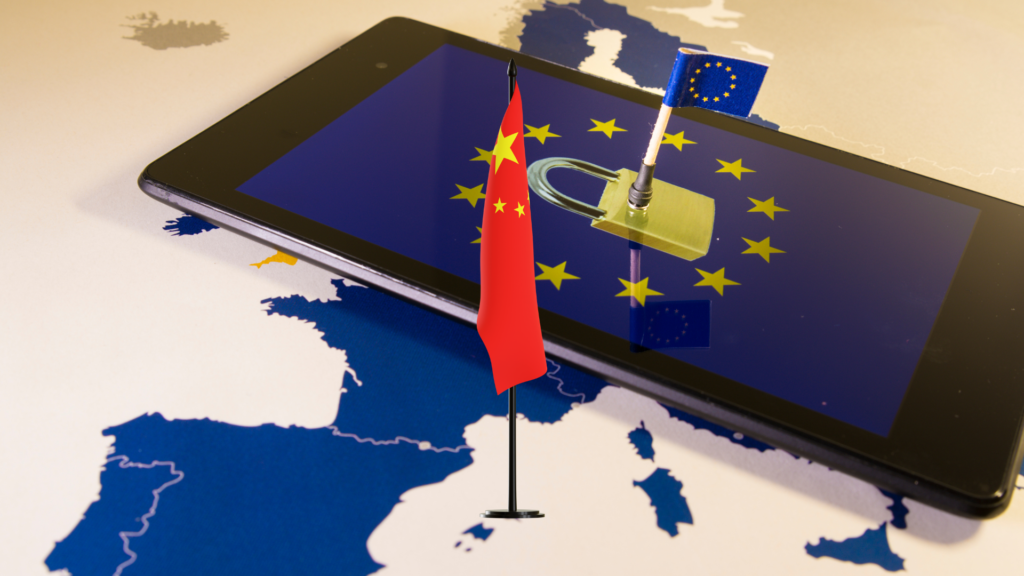
Since the 1990s Chinese companies have shifted from rare, opportunistic purchases to strategic, large-scale investments in EU economies. This article outlines how those flows evolved by country, by sector and by year from 1990 through 2025, highlights major sums and episodes, and offers a concise reading of the current outlook.
Long-term picture of investments in EU
From the 1990s up to roughly 2010 Chinese outbound investment was modest and focused on trade-related manufacturing and natural resources. A sharp rise in mergers & acquisitions and greenfield projects occurred between 2010 and 2016, driven by industrial policy and private champions seeking technology and market access. After 2016 political scrutiny, regulatory pushback and geopolitical friction slowed deal volume and value; however, 2023–2024 show a partial rebound concentrated in greenfield projects (notably electric vehicle and battery production). Key recent estimates put Chinese FDI in the EU and UK at roughly €10 billion in 2024, a significant uptick compared with the immediate prior years.
Country breakdown: where Chinese investments in EU landed
The geography of Chinese presence is uneven: a few countries capture most capital, while many receive limited, project-specific flows.
Hungary — especially since 2018, Hungary has become a major magnet for Chinese greenfield investments in EU, notably in battery and EV supply chains (large investments in Debrecen and other sites).
Germany & France — historically strong targets for acquisitions in advanced manufacturing and tech, but facing higher political scrutiny for investments in EU that touch critical infrastructure and strategic technology.
United Kingdom & Poland — a mix of digital, gaming, and services deals plus pockets of manufacturing; the UK’s earlier openness produced sizable deals before tighter screening.
Timeline highlights (1990–2025) of investments in EU
•1990s–2005: sporadic trade-related projects and small acquisitions.
• 2006–2015: rapid growth — acquisitions of European firms for brands, technology and market access.
• 2016–2022: decline in deal volume/value amid policy scrutiny and geopolitics.
• 2023–2025: greenfield rebound (EV and batteries) drives a renewed wave of investments in EU.
Sectoral focus — where Chinese investments in EU concentrated
• Electric vehicles & batteries: major greenfield projects (large sums in Hungary and other Central European sites).
• Renewable energy & infrastructure: projects and construction contracts, often via state-linked firms and contractors.
•Tech & services: selective acquisitions and minority stakes, though M&A volume has fallen as scrutiny rose.
Three bullet lists with the keyword “investments in EU”
Top country recipients (examples of investments in EU):
✔ Hungary — large battery plants;
✔ Germany — targeted manufacturing deals;
✔ UK — digital/gaming acquisitions.
Principal motives for investments in EU: market access (sales), securing supply chains (batteries/EVs), acquiring technology and brands. Rhodium Group
Risk and policy responses to investments in EU: tighter screening of strategic sectors, national security reviews, and conditional approvals or divestment demands in sensitive cases.

Magnitudes and sums (aggregate view)
Exact year-by-year totals for 1990–2025 vary by data source and definition (announced vs. completed deals; EU-only vs. EU+UK). Major trackers and academic consortia report that Chinese global outbound FDI fell after 2016 and only began recovering in 2024; Europe (EU+UK) captured a notable share of that rebound, with the region receiving roughly €10 billion in 2024 alone. Longer-run cumulative flows to Europe are substantial but remain concentrated; a handful of projects (each multi-billion euro) can skew annual totals.
Policy implications and outlook for investments in EU
European policymakers will likely balance two priorities: attracting productive investments in EU that bring jobs and industrial capacity, while protecting technology and critical infrastructure. Screening mechanisms and conditional approvals are now the norm, nudging Chinese firms toward greenfield investment (which faces fewer immediate ownership concerns) rather than acquisitions. If geopolitical tensions ease and supply-chain pragmatism persists, expect continued targeted investment in manufacturing (EVs, batteries, renewables) across the EU, especially in countries offering fiscal incentives and land-ready industrial zones.
Conclusion
From scattered deals in the 1990s to concentrated, strategic investments in EU by the 2010s — then to a regulatory pause and a greenfield-led rebound in 2023–2025 — the Chinese investment footprint in Europe has evolved into a policy-sensitive, sector-targeted phenomenon. For EU economies, the task is to capture the industrial and employment benefits while managing technology leakage and national-security risks. The next decade will show whether the recent rebound consolidates into steady industrial partnerships or remains a cyclical response to global market dynamics.
